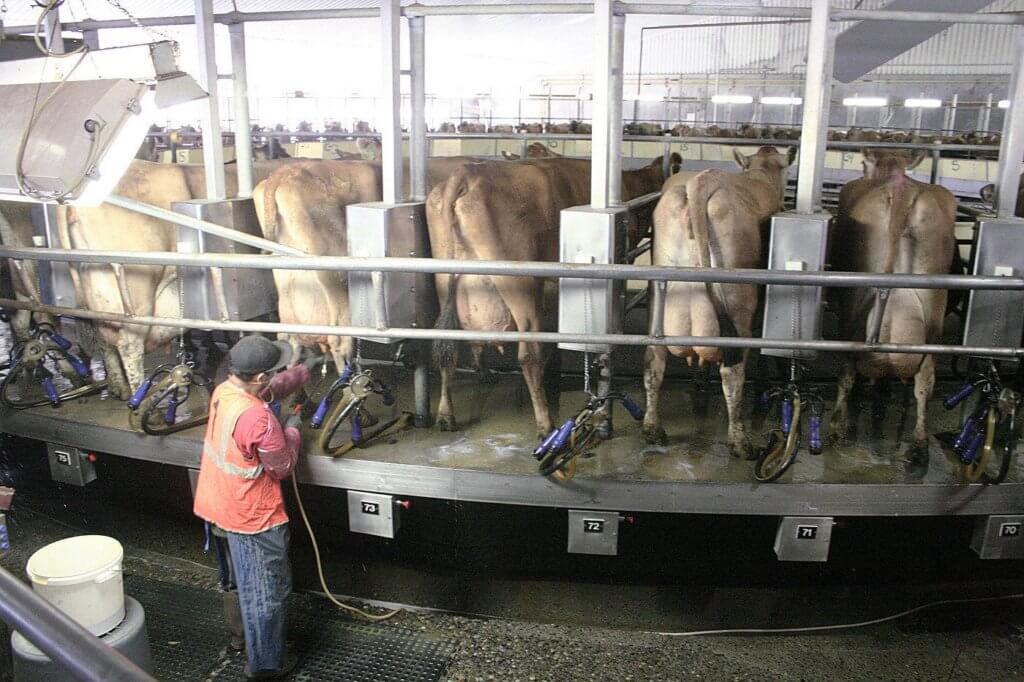By Mateusz Perkowski | Oct 8, 2020 | Capital Press
Critics of large dairies are asking Oregon water regulators to limit new groundwater pumping by such operations within 257 square miles of Umatilla and Morrow counties.
A coalition of environmental groups and others called Stand Up to Factory Farms has submitted a petition asking the Oregon Water Resources Department (OWRD) to restrict such withdrawals to 5,000 gallons per day for new or expanded livestock facilities without water right permits in two critical groundwater areas.
Irrigators must obtain water right permits to divert water in Oregon but some water users are exempt from this requirement, including those who need the water for livestock watering purposes.
This “stockwatering exemption” has grown controversial because critics claims it’s been exploited by major “concentrated animal feeding operations,” or CAFOs, such as the defunct Lost Valley Farm — a dairy near Boardman that ceased operating after bankruptcy and numerous wastewater violations.
“We’re trying to protect the groundwater aquifer from new CAFOs in general or expanded CAFO use,” said Brian Posewitz, staff attorney for the WaterWatch of Oregon nonprofit, a member of the coalition.
However, if the petition were successful, that wouldn’t necessarily prohibit any new CAFOs in the region, such as a planned redevelopment of the Lost Valley Farm operation by another operator, Posewitz said. For example, such a facility may have a different plan for obtaining water than relying on the stockwatering exemption.
Other withdrawals of groundwater exempt from water rights permits are already restricted to 5,000 gallons per day, he said. “That amount is the same as the limit for industrial and commercial use.”
Livestock watering is exempt from water right permits without restriction under Oregon law, but the coalition believes the 5,000-gallon cap can be imposed by regulation as long as it applies within critical groundwater areas.
The Oregon Water Resources Commission — which oversees OWRD — has implemented seven critical groundwater areas, the only regulatory designation under which regulators can curtail authorized water uses.
The coalition argues that regulators not only have the authority to preclude new water right permits in such areas but also to limit exempt water uses without a change in statute, Posewitz said. “Our view is they can just amend the restrictions for that.”
Racquel Rancier, OWRD’s senior policy coordinator, said the agency must review the petition before commenting on it. The agency has 90 days after receiving the petition to either deny it or begin the rule-making process.
Tami Kerr, executive director of the Oregon Dairy Farmers Association, said she could not comment on the petition because she hadn’t yet read it.
According to the coalition’s petition, the existing rules for the two critical groundwater areas in the “ordnance gravel” and “ordnance basalt” regions of Umatilla and Morrow counties were implemented in 1976, before “industrial livestock operations” and “mega-dairies” were built in the region.
Since then, the number of cattle and calves has more than tripled from about 38,000 to 149,000 while groundwater levels in the region have continued to decline, the petition said. “Revising the order to preclude new and expanded exempt use of more than 5,000 gallons per day for stockwatering is now necessary to further the state’s water policy, conserve groundwater resources, and protect the public welfare, safety and health.”
This article originally appeared in the Capital Press on Oct. 8, 2020.

